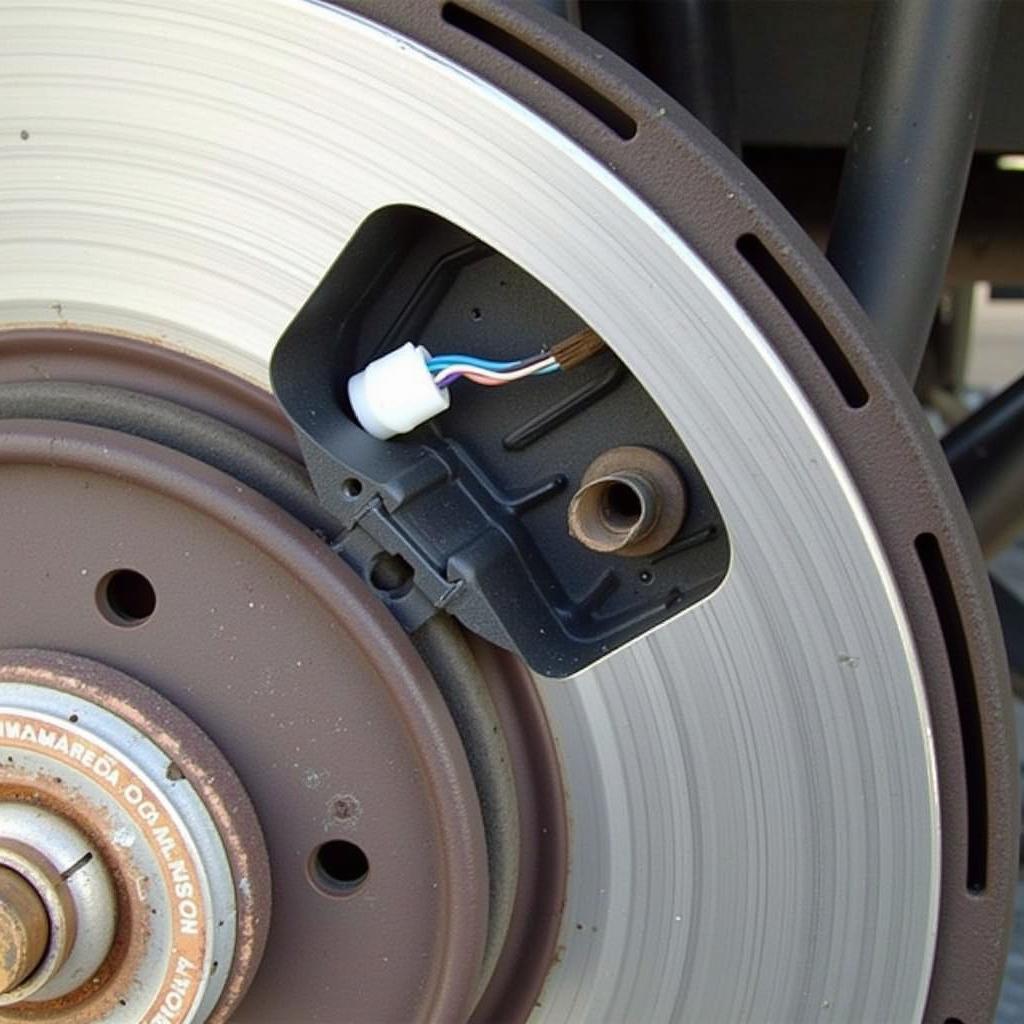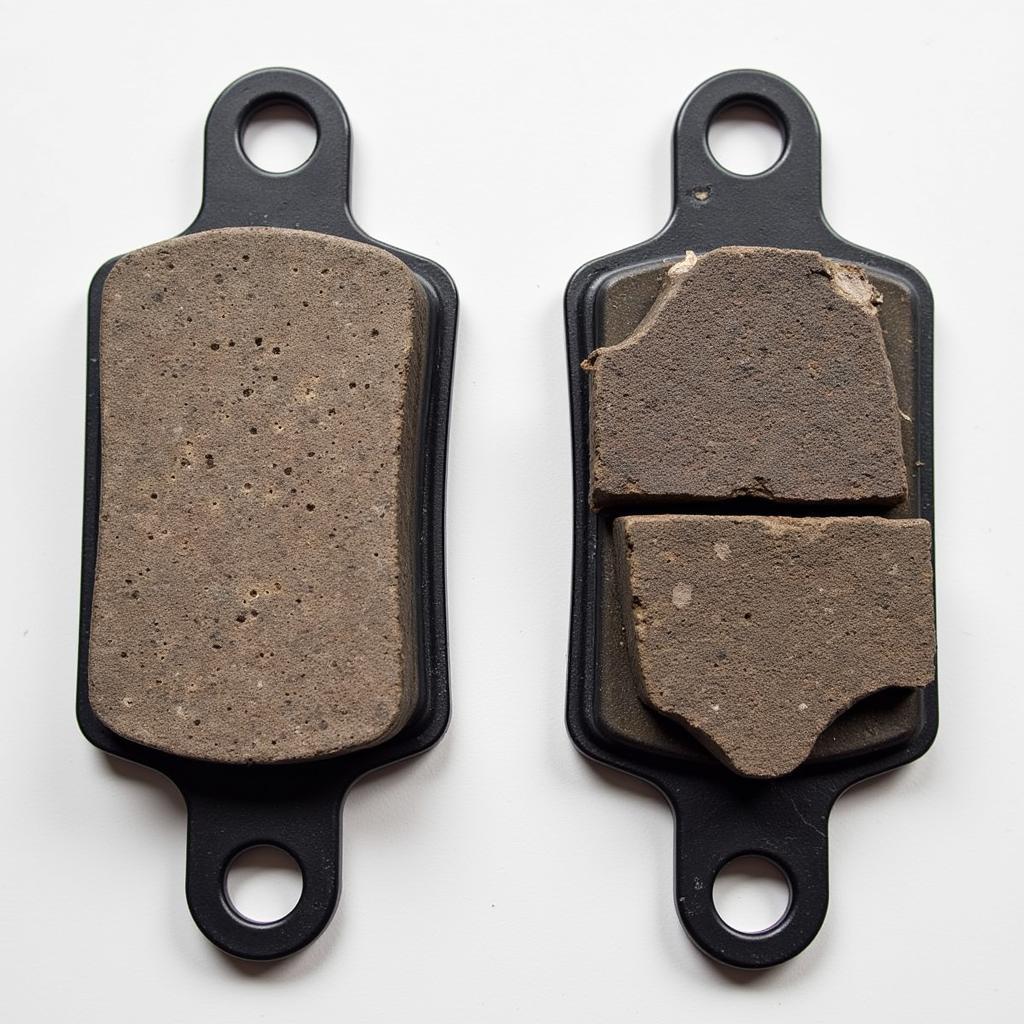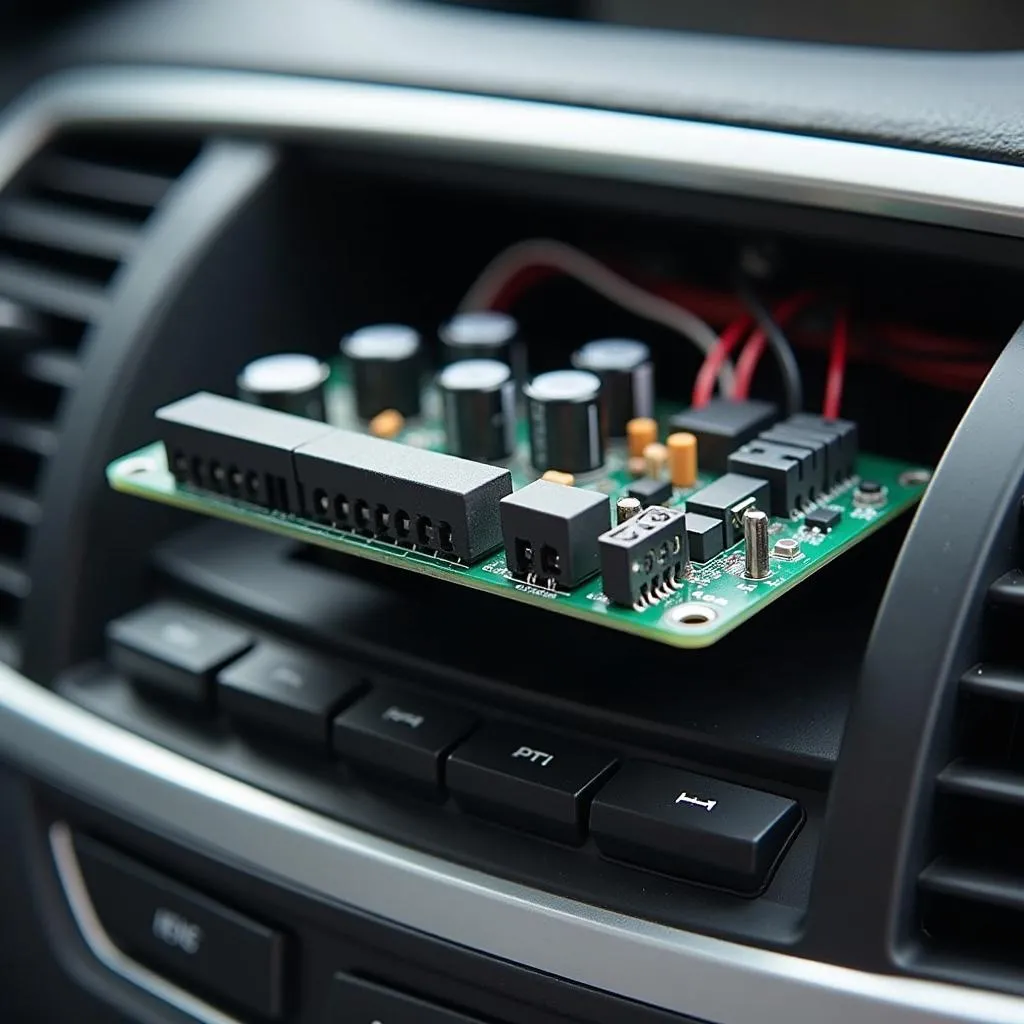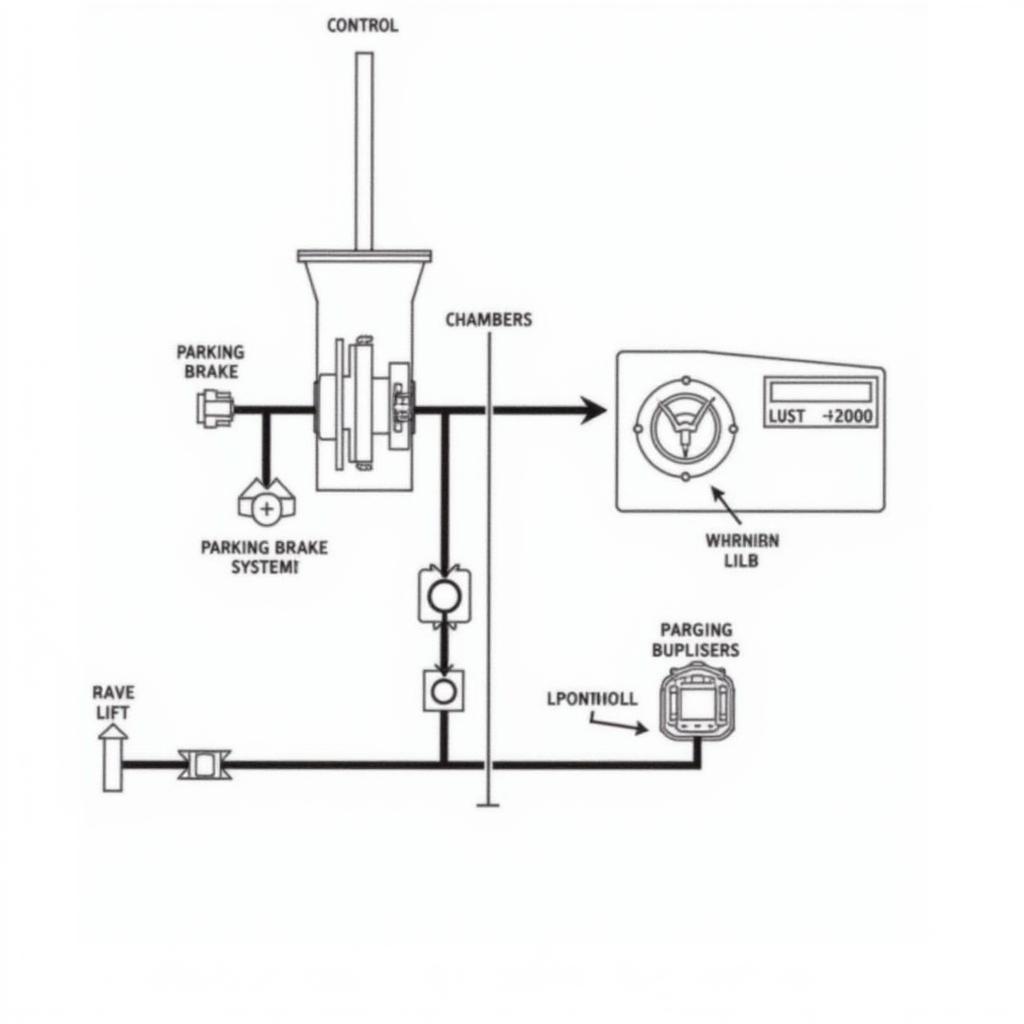The dreaded Passat B6 brake pad warning light can be a source of anxiety for any driver. Understanding its causes and knowing how to address the issue can save you time, money, and potential headaches. This guide provides a detailed explanation of the Passat B6 brake pad warning light, from its underlying causes to DIY solutions and professional diagnostic options.
The appearance of the brake pad warning light on your dashboard indicates that your brake pads are nearing the end of their lifespan and require attention. Ignoring this warning can lead to costly repairs and compromise your safety. For instance, if you’ve encountered issues like the brake warning light on a BMW 3-series, you understand the importance of addressing such warnings promptly.
Understanding the Passat B6 Brake Pad Warning System
The Passat B6 utilizes a sophisticated electronic system to monitor brake pad wear. This system typically involves sensors embedded within the brake pads themselves. When the pad material wears down to a critical level, the sensor triggers the warning light on your dashboard.
Common Causes of the Warning Light
While worn brake pads are the most frequent culprit, other factors can also trigger the Passat B6 brake pad warning light:
- Worn brake pad sensors: These sensors are designed to wear down along with the brake pads. Sometimes, they can malfunction or become damaged prematurely.
- Low brake fluid: The brake system relies on hydraulic pressure, and low fluid levels can trigger the warning light. This issue often accompanies a soft or spongy brake pedal.
- Faulty brake pad wear sensor wiring: Damage to the wiring connecting the sensors to the vehicle’s electronic control unit (ECU) can cause false readings.
- Issues with the ABS system: While less common, problems with the Anti-lock Braking System (ABS) can sometimes illuminate the brake pad warning light. If you experience this alongside other warning lights, such as ABS or traction control illumination, similar to the situation described in abs traction control brake warning lights all come on, it’s crucial to have your vehicle inspected by a professional.
 Passat B6 Brake Pad Sensor
Passat B6 Brake Pad Sensor
Diagnosing the Problem
Before rushing to replace your brake pads, it’s essential to diagnose the exact cause of the warning light. Here’s a step-by-step guide:
- Check the brake fluid level: Locate the brake fluid reservoir under the hood and ensure the fluid level is within the specified range. If it’s low, top it off with the correct brake fluid type. However, low brake fluid often indicates a leak, which requires professional attention.
- Inspect the brake pads: Visually inspect the brake pads through the wheel spokes. If they appear thin or worn, they likely need replacing.
- Check the brake pad sensor wiring: Look for any signs of damage or corrosion on the wiring connected to the brake pad sensors.
 Passat B6 Worn Brake Pads
Passat B6 Worn Brake Pads
If you’re comfortable with basic car maintenance, you can replace the brake pads and sensors yourself. However, if you’re unsure, it’s always best to consult a qualified mechanic. You might find the information on how to reset the brake warning light on a BMW 3 series helpful, especially if you’re dealing with a similar situation on your Passat B6 after replacing the pads.
“Regular brake inspections are crucial for maintaining vehicle safety,” says John Smith, ASE Certified Master Technician. “Don’t ignore warning lights, as they are often the first indication of a potential problem.”
Remote Diagnostics and Software Solutions
Modern vehicles, including the Passat B6, often require specialized diagnostic tools and software for troubleshooting and repairs. Remote diagnostics and software solutions are increasingly becoming a valuable tool for addressing complex issues. These tools can access the vehicle’s ECU to pinpoint the exact cause of the warning light and even perform software updates or resets remotely. This approach can be incredibly helpful in situations like figuring out how to get rid of the “stop brake engine” Mercedes warning.
 Passat B6 Remote Diagnostics
Passat B6 Remote Diagnostics
Conclusion
The Passat B6 brake pad warning light serves as a crucial safety feature. Addressing the issue promptly can prevent further damage and ensure your safety on the road. By understanding the causes of the warning light and following the diagnostic steps outlined above, you can take the necessary action to keep your Passat B6 running smoothly and safely. If you’re experiencing similar brake light warnings on other vehicles, such as the 2013 Chevy Malibu brake light warning light, remember that addressing the issue promptly is always recommended.
“Addressing brake issues early can save you both time and money in the long run,” adds Jane Doe, Automotive Engineer specializing in brake systems. “Don’t hesitate to seek professional help if needed.”
FAQ
- How often should I check my brake pads? It’s recommended to visually inspect your brake pads every 10,000 miles or during your regular tire rotations.
- Can I drive with the brake pad warning light on? While you can technically still drive, it’s not recommended. Continuing to drive with worn brake pads can damage your rotors and compromise your braking ability.
- How much does it cost to replace brake pads and sensors? The cost varies depending on your location and the specific parts required. However, you can expect to pay between $150 and $300 per axle.
- What type of brake fluid should I use in my Passat B6? Consult your owner’s manual for the specific brake fluid type recommended for your model year.
- Can I reset the brake pad warning light myself? In some cases, you can reset the light by disconnecting the battery or using a diagnostic tool. However, it’s best to consult your owner’s manual or a qualified mechanic.
- What should I do if the warning light comes back on after replacing the brake pads and sensors? This indicates a potential issue with the braking system that requires further diagnosis by a professional.
- Is it safe to replace brake pads myself? If you have experience with car maintenance, you can replace the brake pads yourself. However, if you’re unsure, it’s always best to consult a qualified mechanic.


